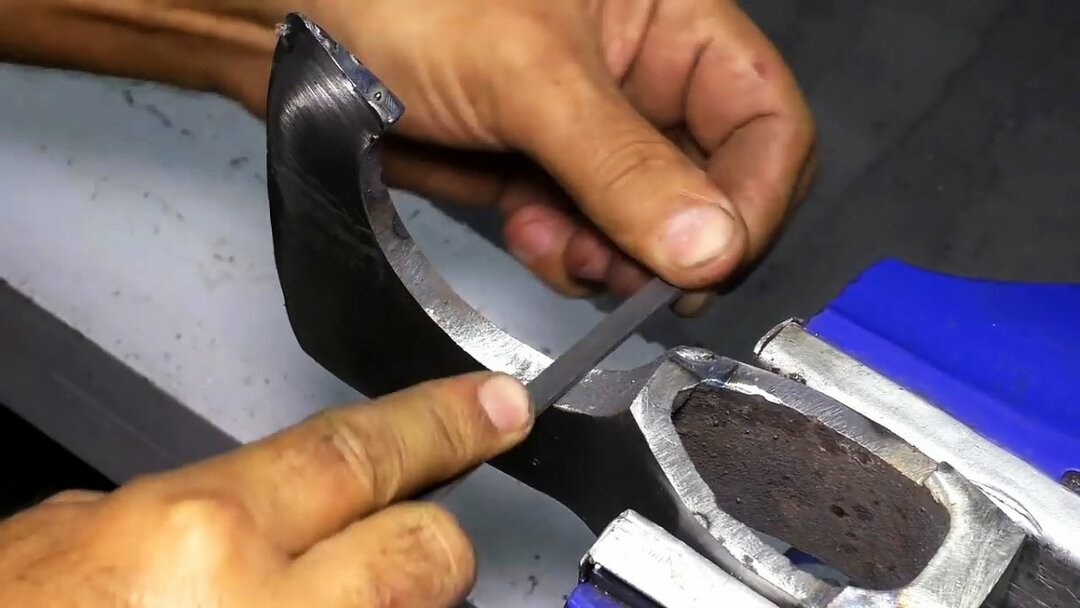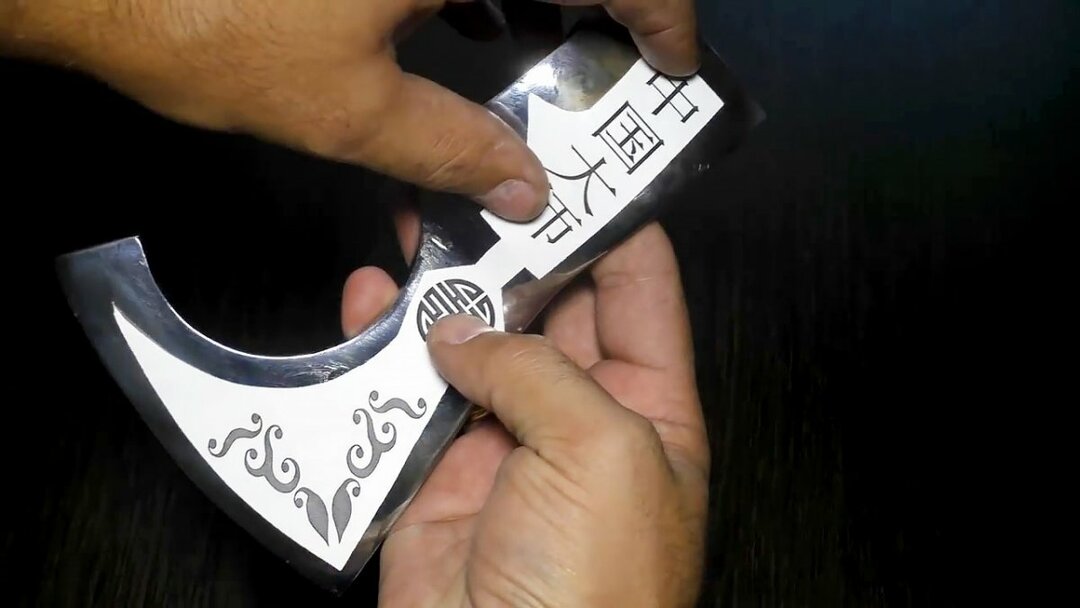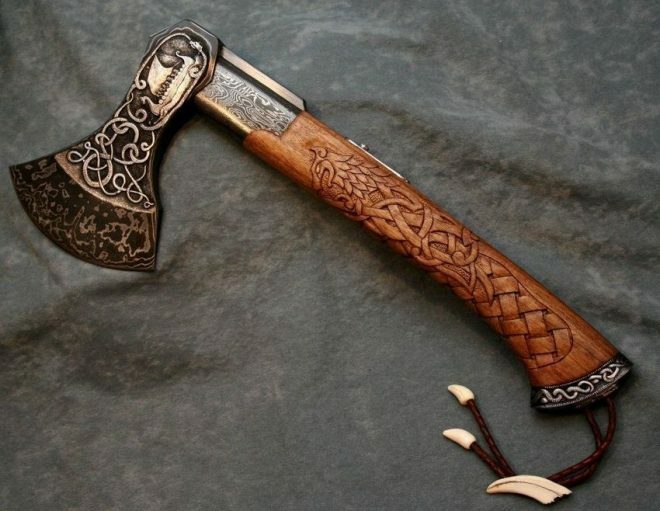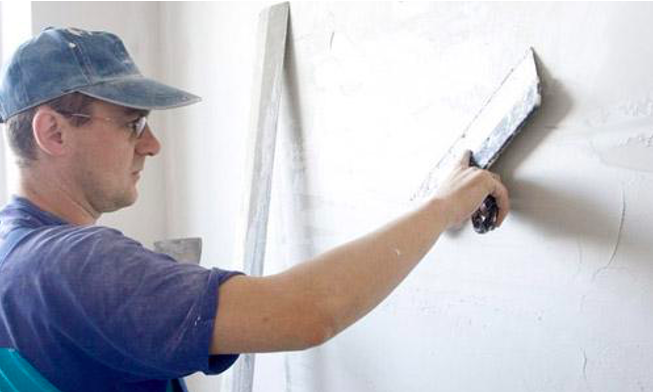A Scandinavian or Viking ax is a great decoration or a valuable gift for a collector. However, such a product retains its operational properties. Its main feature is that the blade is shaped like a crescent moon and is located along the handle. Do-it-yourself creation of such a homemade product is possible from the usual ax. Let's figure out what needs to be prepared and what is the sequence of stages of the process.
The content of the article
- What you need to make a Scandinavian ax
-
DIY manufacturing process steps
- Manufacturing of the wooden part
- Making a braid and a cover
What you need to make a Scandinavian ax
In addition to the main "raw materials" (working part made of metal and wood for the handle), you need:
- grinder, equipped with circles for working with metal - cutting and petal;
- durable knife;
- clamps and bench vise;
- sandpaper with different roughness;
- brush for varnishing;
- welding;
- small electric drill, small diameter drills.
For registration, you need to prepare adhesive tape. You will also need a clerical knife, for drawing a drawing - a pencil or pen, for coating - varnish.
Additionally - to create a cover - you will need leather, scissors, as well as an awl, needles and threads.
DIY manufacturing process steps
First of all it is necessary to give the desired shape to the head of the instrument. A contour should be applied to it - the front corner of the blade is made narrower, and the back part is rounded inward. According to the basting with the help of a grinder, a cut is made, followed by stripping with emery until a mirror shine appears.

@sdelaysam-svoimirukami.ru
The next step is decoration. Not everyone can manually apply an ornament to metal, so you should take care of printing out a sketch. The pattern is complemented by a border around the perimeter. To protect the applied image, the head of the instrument is covered with adhesive tape.

@sdelaysam-svoimirukami.ru
On those elements of the picture that need to be processed, the adhesive tape is cut off. You should work carefully and use a sharp knife - if the adhesive tape is damaged, this step will have to be done again.
Now it's the turn of etching. First, the entire metal part is painted. Etching should be started when the paint has set, but not completely dry. Before that, once again you need to make sure that all the cut lines are even, because later it will be impossible to correct something. Further:
- A container for the electrolyte is taken - it should completely accommodate the workpiece.
- An electrolyte is being prepared - about 800 grams of salt and 3-4 liters of water - this amount will cover the entire metal.
- The "+" of the welding machine is connected to the latter.
- A frame is fixed on “-” to increase the area of the electrode.
- It is checked that there is no contact between the metal product and "-", the device is turned on.
- The electrolyte should almost boil - after 2 minutes, a break is taken for 1 minute so that the apparatus cools down.
- Such cycles need to be carried out 4-5. In the process, unpainted metal is etched away.
- It is necessary to evaluate the depth of processing. If it is not enough, you will have to repeat.
After achieving a good result, the paint is removed with emery. Before this, the metal product is washed and dried.
The processing of the head of the instrument ends with polishing with a grinder. Now you need to install the handle.
Manufacturing of the wooden part
If the ax will be used and not just hung on the wall, you need to choose a specific grade tree. Oak, ash, maple, beech are best suited.
When planing, the sequence is observed: first a tail, a throat are created, then the body of the ax handle, an eye with roundings. The back should be the required width. A hole is provided where required. A roundness is made.
The wooden part can also be patterned. The selected image is applied with a pencil, and then performed with a drill.

@strelka-detector.ru
Making a braid and a cover
These elements have not only a decorative, but also a protective purpose. The cover is created for the entire instrument or separately for the head. To protect the blade, a scabbard is made, a whip covers the handle.
Leather is taken or a budget option - leatherette. The braid is made simply - it wraps around the product. Stripes can be of different widths. To ensure a comfortable grip, it is better to embed thick material into wood.
The scabbard is made in the desired shape so that it wraps around the sharpest part. Stitching with a thick thread is used, alternation of colors can be used. Holes are best done on a flat surface: this will eliminate unnecessary bends.
It will be easier to perform manipulations with rough skin if you apply oil to treat it in advance.

@strelka-detector.ru
The tree, together with the braid and the scabbard, is varnished or linseed oil. This will serve as protection against moisture and external influences, and will also create an interesting visual effect.
To install, you need to take a wedge. Suitable for wood or metal. The handle is driven into the opening of the head, fixed with a wedge.
In the process of creating, you must not forget to use individual protection. When forming an ax handle, cutting movements should be made in the direction away from you. When handling paint, care must be taken to ventilate the room or do all the work outside.


